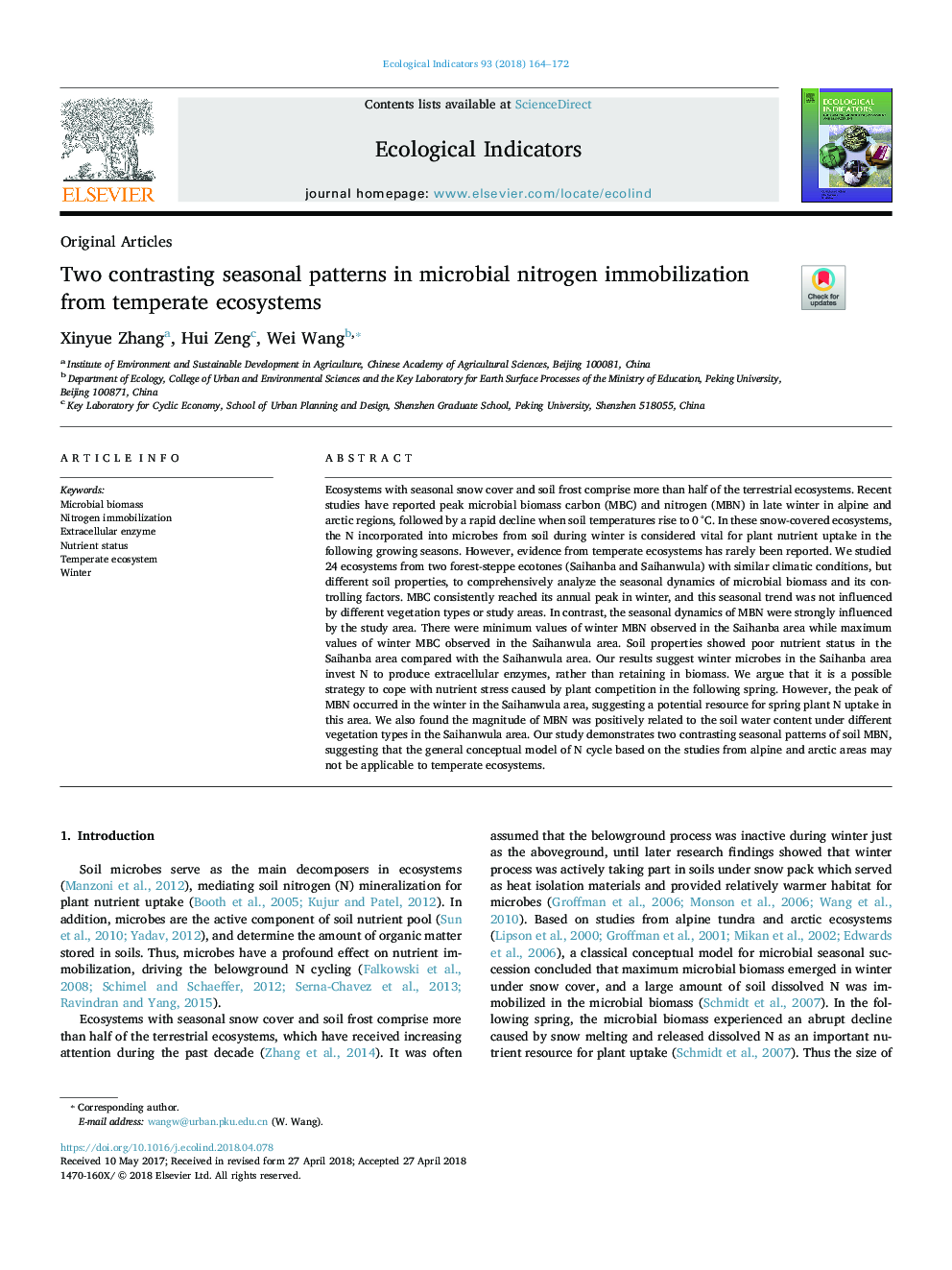| کد مقاله | کد نشریه | سال انتشار | مقاله انگلیسی | نسخه تمام متن |
|---|---|---|---|---|
| 8845105 | 1617109 | 2018 | 9 صفحه PDF | دانلود رایگان |
عنوان انگلیسی مقاله ISI
Two contrasting seasonal patterns in microbial nitrogen immobilization from temperate ecosystems
ترجمه فارسی عنوان
دو الگوی فصلی متضاد در بیسموتیک نیتروژن میکروبی از اکوسیستم های معتدل
دانلود مقاله + سفارش ترجمه
دانلود مقاله ISI انگلیسی
رایگان برای ایرانیان
کلمات کلیدی
بیوماس میکروبی، بی حرکت سازی نیتروژن، آنزیم خارج سلولی، وضعیت تغذیه ای، اکوسیستم معتدل، زمستان،
موضوعات مرتبط
علوم زیستی و بیوفناوری
علوم کشاورزی و بیولوژیک
بوم شناسی، تکامل، رفتار و سامانه شناسی
چکیده انگلیسی
Ecosystems with seasonal snow cover and soil frost comprise more than half of the terrestrial ecosystems. Recent studies have reported peak microbial biomass carbon (MBC) and nitrogen (MBN) in late winter in alpine and arctic regions, followed by a rapid decline when soil temperatures rise to 0â¯Â°C. In these snow-covered ecosystems, the N incorporated into microbes from soil during winter is considered vital for plant nutrient uptake in the following growing seasons. However, evidence from temperate ecosystems has rarely been reported. We studied 24 ecosystems from two forest-steppe ecotones (Saihanba and Saihanwula) with similar climatic conditions, but different soil properties, to comprehensively analyze the seasonal dynamics of microbial biomass and its controlling factors. MBC consistently reached its annual peak in winter, and this seasonal trend was not influenced by different vegetation types or study areas. In contrast, the seasonal dynamics of MBN were strongly influenced by the study area. There were minimum values of winter MBN observed in the Saihanba area while maximum values of winter MBC observed in the Saihanwula area. Soil properties showed poor nutrient status in the Saihanba area compared with the Saihanwula area. Our results suggest winter microbes in the Saihanba area invest N to produce extracellular enzymes, rather than retaining in biomass. We argue that it is a possible strategy to cope with nutrient stress caused by plant competition in the following spring. However, the peak of MBN occurred in the winter in the Saihanwula area, suggesting a potential resource for spring plant N uptake in this area. We also found the magnitude of MBN was positively related to the soil water content under different vegetation types in the Saihanwula area. Our study demonstrates two contrasting seasonal patterns of soil MBN, suggesting that the general conceptual model of N cycle based on the studies from alpine and arctic areas may not be applicable to temperate ecosystems.
ناشر
Database: Elsevier - ScienceDirect (ساینس دایرکت)
Journal: Ecological Indicators - Volume 93, October 2018, Pages 164-172
Journal: Ecological Indicators - Volume 93, October 2018, Pages 164-172
نویسندگان
Xinyue Zhang, Hui Zeng, Wei Wang,
